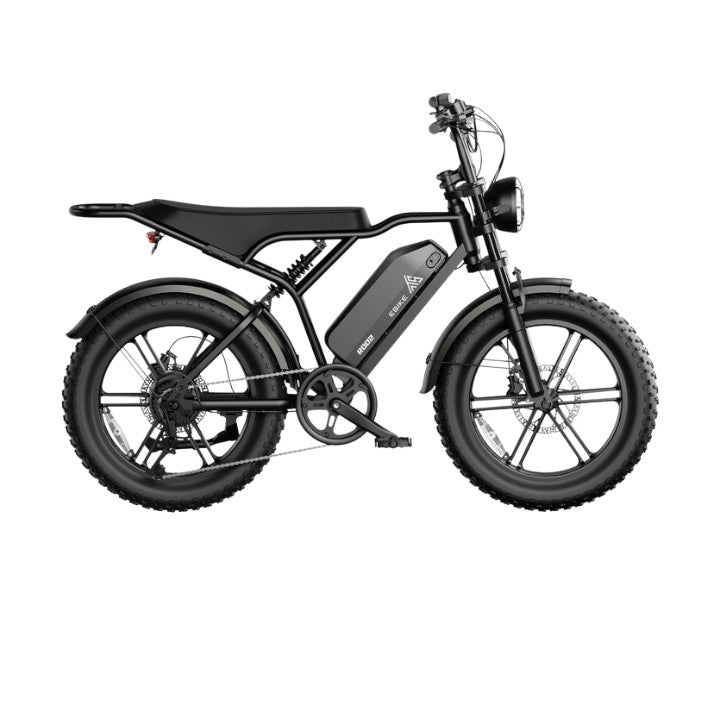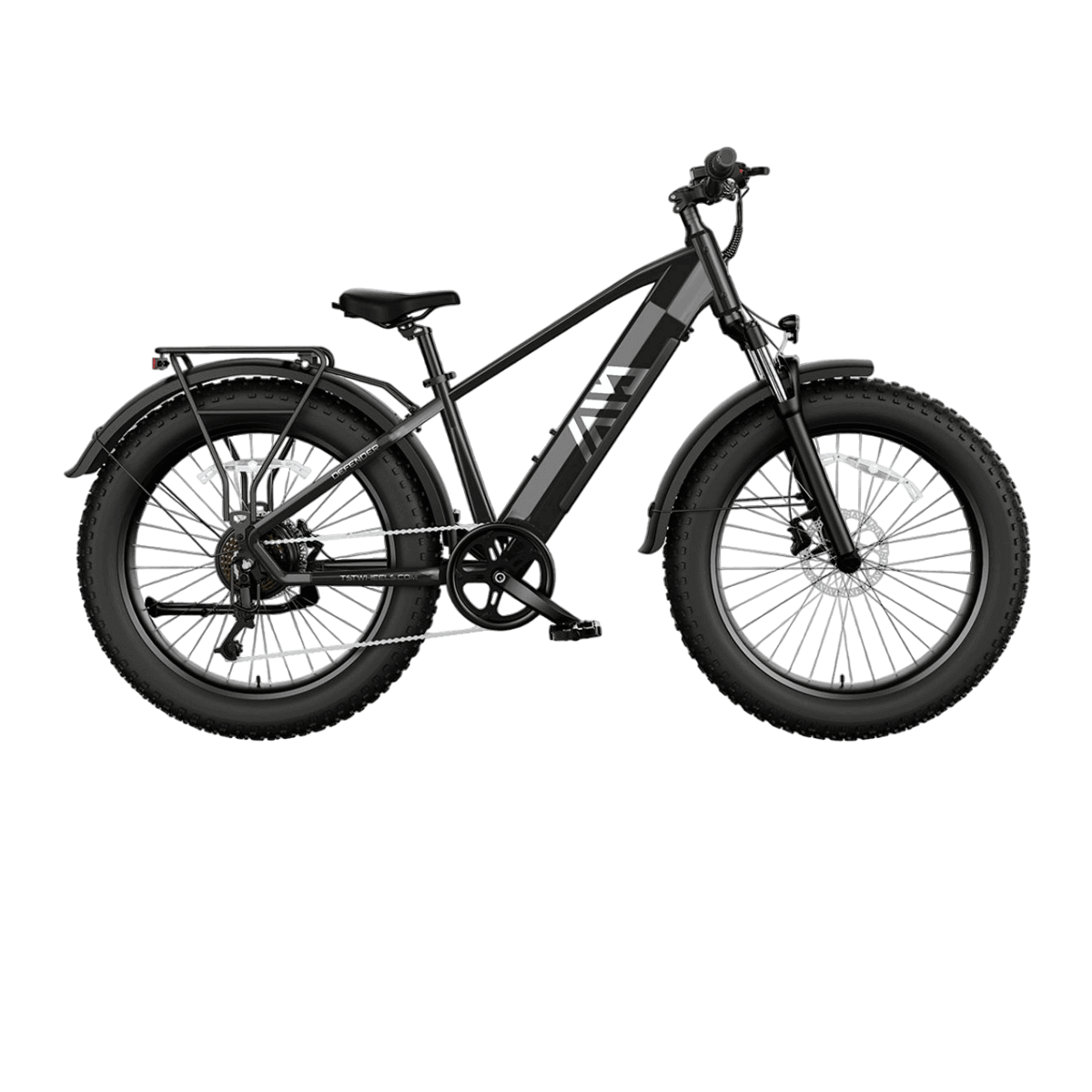Choosing the right parking spot and storage method for your electric bike is essential to protect your investment, ensure safety, and maintain performance. Whether you own a rugged TST EBike 26-inch model for rough terrains or a versatile 27-inch model for daily commuting, selecting secure, weather-protected, and convenient storage prolongs your e-bike’s lifespan and provides peace of mind.
What Are the Best Indoor Storage Options for Electric Bikes?
Indoor storage options like garages, basements, or dedicated bike rooms offer the best protection against theft, weather, and damage. These spaces shield your e-bike from rain, snow, UV rays, and temperature fluctuations that can degrade batteries and components. Using wall mounts, ceiling pulleys, or bike racks can save space and keep your bike secure and organized indoors.
How Should You Secure Your Electric Bike When Parking Outdoors?
When parking outdoors, always use high-quality locks such as U-locks or heavy-duty chains to secure the frame and wheels to a fixed object. Detach and take the battery indoors to prevent theft and moisture damage. Choose well-lit, busy areas with surveillance if possible, and minimize parking time outside. Waterproof covers can protect against rain and dirt but do not replace secure locking.
Chart: Indoor vs Outdoor Storage Pros and Cons
| Storage Type | Pros | Cons |
|---|---|---|
| Indoor | Protection from weather and theft | Requires sufficient space |
| Outdoor | Convenient and accessible | Higher risk of theft and environmental damage |
Which Environmental Factors Affect Electric Bike Storage?
Extreme temperatures, humidity, and moisture can damage batteries and electrical components. Ideal storage temperatures range from 50°F to 77°F (10°C to 25°C). Avoid damp or unventilated areas to prevent corrosion. During winter, remove the battery and store it in a temperature-controlled environment to maintain battery health and prevent deep discharge.
How Can You Prepare Your Electric Bike for Long-Term Storage?
Clean your e-bike thoroughly to remove dirt and grime. Inflate tires to recommended pressure to avoid flats. Charge the battery to about 40-60% before storage and disconnect it if possible. Cover the bike with a breathable fabric to prevent dust without trapping moisture. Regularly check the bike during storage to ensure components remain in good condition.
Which TST EBike Models Are Best Suited for Different Storage Needs?
TST e-bikes like the Cargo Pro and FoldMaster cater to varied storage needs. The Cargo Pro offers built-in racks and large baskets, ideal for carrying groceries or packages. The FoldMaster’s compact foldability suits small apartments or limited space storage. Both models balance convenience and functionality, making them perfect for urban dwellers, commuters, or anyone needing practical storage solutions without compromising ride quality or battery performance.
| Model | Wheel Size | Terrain Suitability | Storage Considerations |
|---|---|---|---|
| TST EBike 26-inch Model | 26-inch | Rough terrains like snow and sand | Robust frame suited for indoor/outdoor storage with battery removal |
| TST EBike 27-inch Model | 27-inch | Daily commuting and mountain biking | Lightweight and versatile, ideal for compact indoor storage |
Both models benefit from indoor storage to maximize battery life and component durability but can be secured outdoors with proper precautions.
Why Is Battery Care Critical in Electric Bike Storage?
The battery is the most sensitive and expensive component of an e-bike. Improper storage can cause capacity loss or permanent damage. Store batteries indoors, away from extreme temperatures and moisture. Charge to partial capacity before storage and avoid full depletion. Remove batteries from the bike if storing for extended periods.
What Security Measures Enhance Electric Bike Safety?
Use multiple locks securing the frame and wheels. Consider locking the seat post and removing accessories. Register your e-bike and mark components for identification. Use GPS trackers for added security. When possible, park in monitored or secure locations to deter theft.
Buying Tips for Electric Bike Parking and Storage Solutions
- Choose Indoor Storage: Prioritize garages, basements, or secure bike rooms to protect your e-bike.
- Invest in Quality Locks: Use U-locks and chains to secure frame and wheels.
- Use Wall or Ceiling Mounts: Save space and protect your bike from damage.
- Protect Batteries: Remove and store batteries in temperature-controlled, dry environments.
- Consider Weather Protection: Use waterproof covers for outdoor storage but never rely solely on them.
Electric bikes (e-bikes) are becoming a staple in urban commuting and outdoor adventures, offering an eco-friendly, efficient way to travel. However, owning an e-bike comes with responsibilities, particularly when it comes to parking and storage. A well-chosen parking spot and storage method can prevent theft, prolong your e-bike’s lifespan, and ensure it remains ready to ride.
In this comprehensive guide, we’ll explore everything you need to know about securing, parking, and storing your e-bike, with practical tips, insights, and tools to make the process simple and effective.
Why Parking and Storage Matter for Your E-Bike
Proper parking and storage of your e-bike prevent theft, weather damage, and battery degradation. Securing your bike indoors or in a protected area extends its lifespan and ensures optimal performance. Neglecting these aspects can lead to costly repairs and reduced efficiency.
E-bikes are valuable assets, not just in terms of cost but also their role in promoting sustainability and convenience. Here’s why proper parking and storage are essential:
- Theft Prevention: E-bikes are attractive targets for thieves due to their higher value compared to traditional bicycles. Proper storage reduces this risk significantly.
- Longevity: Exposure to extreme weather conditions such as rain, snow, or direct sunlight can harm your e-bike’s components, including the battery, motor, and frame.
- Convenience: Knowing where and how to store your e-bike ensures hassle-free access, whether for daily commutes or weekend rides.
How to Choose the Right Parking Spot
Select a well-lit, high-traffic area to deter theft. Use sturdy bike racks and secure your e-bike with a high-quality U-lock through the frame and rear wheel. Avoid leaving your bike in isolated or poorly lit locations, and always remove the battery when possible.
1. Prioritize Security
When parking your e-bike, always opt for secure locations. These include areas with:
- Surveillance Cameras: Public spaces with cameras can deter theft.
- High Foot Traffic: Busy areas are less likely to attract thieves.
- Bike Racks: Look for sturdy racks that allow you to lock both the frame and wheels.
Quick Tip: Use a combination of a U-lock and a cable lock for maximum security. Secure the frame and one wheel to an immovable object.
Guide: Locking Your E-Bike Correctly
| Step | What to Do | |
|---|---|---|
| Lock the Frame | Secure the frame to a bike rack or pole. | |
| Lock Both Wheels | Use a secondary lock to secure the front or rear wheel. | |
| Cover Key Components | Avoid exposing your battery or display while parked. |
2. Consider Weather Protection
Weather can significantly impact your e-bike’s lifespan. When parking outdoors, prioritize areas that provide:
- Shade: Prolonged sun exposure can degrade the paint and overheat the battery.
- Cover from Rain or Snow: Water can seep into the motor or battery, causing malfunctions.
For extended outdoor parking, invest in a waterproof bike cover.
3. Follow Local Rules
Many cities have designated bike parking zones or specific regulations. Ignoring these rules could result in fines or having your bike impounded.
Best Storage Methods for Your E-Bike
Store your e-bike indoors in a dry, temperature-controlled space like a garage or basement. Use wall-mounted racks or floor stands to save space and prevent damage. Keep the battery partially charged (around 50-70%) and remove it for long-term storage.
1. Indoor Storage
Indoor storage is ideal for protecting your e-bike from weather and theft. Consider these methods:
- Garage or Basement: These spaces offer optimal protection from both weather and thieves. Ensure the area is dry and cool to prevent rust or battery damage.
- Bike Stands or Racks: Wall-mounted racks save space and keep your e-bike organized. They also reduce the risk of accidental damage.
Indoor Storage Options
| Storage Option | Advantages | Disadvantages |
|---|---|---|
| Garage/Basement | Weatherproof, secure, spacious | Requires dedicated space |
| Wall-Mounted Racks | Space-saving, keeps bike accessible | Installation required |
| Folding Bike Stands | Portable, easy to set up | May not support heavier e-bikes |
2. Outdoor Storage
If indoor storage isn’t feasible, follow these outdoor storage best practices:
- Use a Waterproof Cover: A high-quality cover shields your e-bike from rain, snow, and UV rays.
- Install a Secure Ground Anchor: This provides an additional locking point for better theft prevention.
- Elevate Your Bike: Place it on a raised platform or mat to avoid direct contact with wet ground.
3. Battery Storage Tips
The battery is the most sensitive and expensive component of your e-bike. Proper storage is critical:
- Charge Status: Store your battery partially charged (30%-70%).
- Temperature Control: Avoid extreme temperatures; room temperature is ideal.
- Separate Storage: Remove the battery from the bike and store it indoors in a dry, cool place.
Read more about e-bike battery care.
Mistakes to Avoid When Parking and Storing Your E-Bike
Avoid using cable locks, as they are easily cut; opt for U-locks instead. Don't leave your e-bike exposed to the elements, which can cause rust and battery issues. Never store the battery fully charged or completely drained, as this shortens its lifespan.
- Leaving It Unlocked: Even in seemingly safe areas, an unlocked e-bike is an easy target.
- Skipping Maintenance: Dirt, dust, and moisture can accumulate during storage, leading to rust or malfunctioning parts.
- Exposing the Battery: Always remove the battery if parking in public or in extreme weather.
FAQs About Parking and Storing E-Bikes
Q1: Can I store my e-bike outside during winter?
Yes, but ensure it’s covered with a waterproof bike cover and protected from snow. Remove and store the battery indoors.
Q2: How do I prevent my e-bike from being stolen?
Use high-quality locks, park in secure locations, and consider GPS trackers for added security.
Q3: What’s the best way to store an e-bike for long-term use?
Store it in a dry, temperature-controlled indoor space. Keep the battery partially charged and clean the bike thoroughly before storage.
Final Thoughts
Parking and storing your electric bike properly is not just about convenience—it’s about ensuring the safety, longevity, and performance of your e-bike. By choosing secure parking spots, protecting your bike from weather, and investing in proper storage solutions, you’ll enjoy a seamless and worry-free riding experience.
Take the first step towards better e-bike care by implementing these tips today. For more helpful guides, visit our blog section.











Leave a comment
All comments are moderated before being published.
This site is protected by hCaptcha and the hCaptcha Privacy Policy and Terms of Service apply.